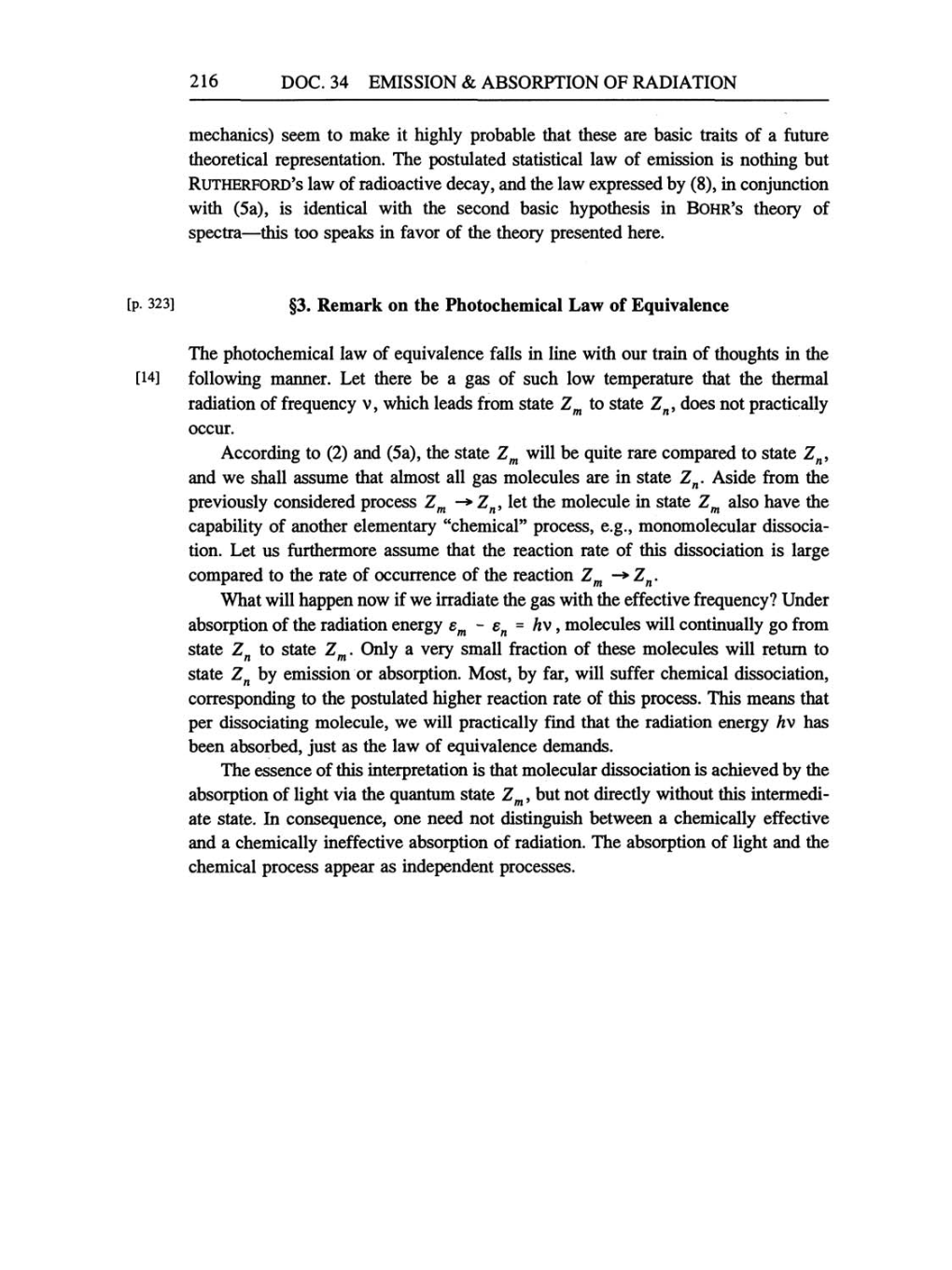216
DOC. 34 EMISSION & ABSORPTION OF RADIATION
mechanics) seem
to
make it
highly probable
that these
are
basic traits
of
a
future
theoretical
representation.
The
postulated
statistical law
of
emission is
nothing
but
Rutherford's
law of radioactive
decay,
and the law
expressed by
(8),
in
conjunction
with
(5a),
is identical with the second basic
hypothesis
in
Bohr's
theory
of
spectra-this
too
speaks
in favor of the
theory presented
here.
[p. 323] §3.
Remark
on
the Photochemical Law of
Equivalence
The
photochemical
law
of
equivalence
falls in line with
our
train
of
thoughts
in the
[14]
following manner.
Let there be
a gas
of
such low
temperature
that the thermal
radiation
of
frequency v,
which leads from state
Zm
to state
Zn,
does not
practically
occur.
According
to
(2)
and
(5a),
the state
Zm
will be
quite rare compared
to state
Zn,
and
we
shall
assume
that almost all
gas
molecules
are
in state
Zn.
Aside from the
previously
considered
process
Zm
-
Zn,
let the molecule in state
Zm
also have the
capability
of another
elementary
"chemical"
process, e.g.,
monomolecular dissocia-
tion. Let
us
furthermore
assume
that the reaction rate of this dissociation is
large
compared
to the rate
of
occurrence
of
the reaction
Zm
-» Zn.
What
will
happen
now
if
we
irradiate the
gas
with the effective
frequency?
Under
absorption
of
the
radiation
energy
em
-
en =
hv, molecules will
continually go
from
state
Zn
to state
Zm.
Only a very
small fraction
of
these molecules will return to
state
Zn
by
emission
or absorption. Most, by far,
will suffer chemical
dissociation,
corresponding
to the
postulated higher
reaction rate of this
process.
This
means
that
per dissociating
molecule,
we
will
practically
find that the radiation
energy
hv has
been
absorbed,
just
as
the law
of
equivalence
demands.
The
essence
of
this
interpretation
is that molecular dissociation
is
achieved
by
the
absorption
of
light
via
the
quantum
state
Zm,
but
not
directly
without this intermedi-
ate state.
In
consequence,
one
need not
distinguish
between
a
chemically
effective
and
a
chemically
ineffective
absorption
of
radiation.
The
absorption
of
light
and
the
chemical
process appear
as
independent processes.
